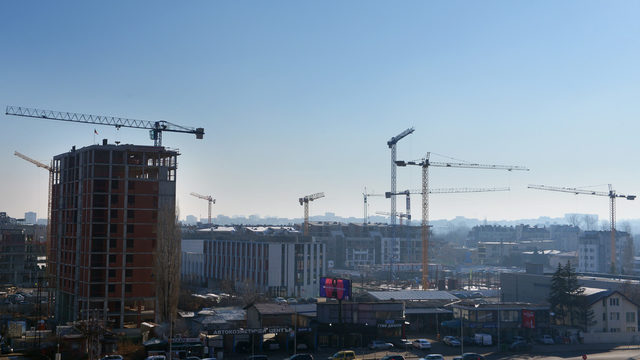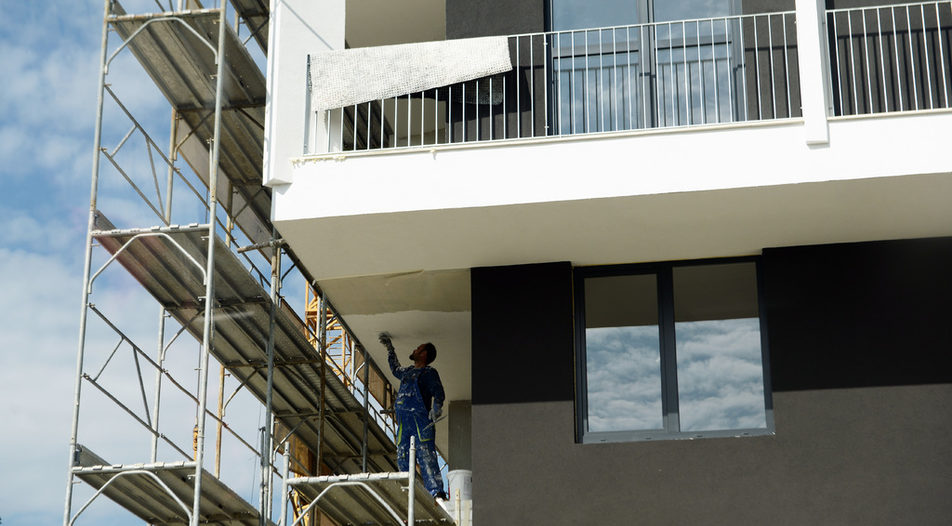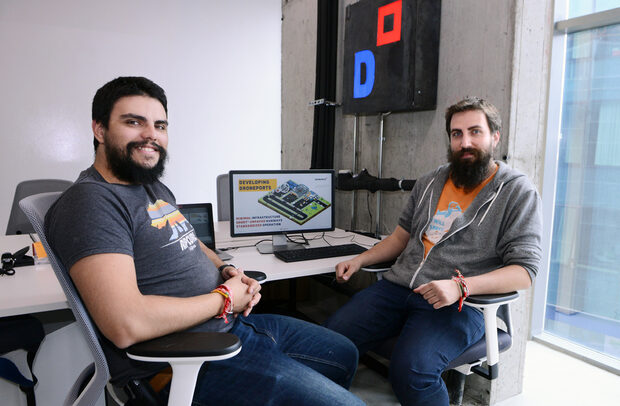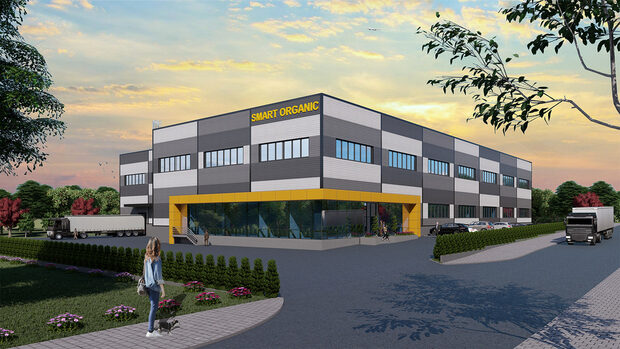- Extensive new construction has started to push prices down
The segmentation in Sofia's residential property market continued last year. The location has ceased to be an indicator of prices; instead, build quality and overall environment have become much more important for prospective buyers. At the same time, record-low mortgage rates and wage growth have led to increased sales. Prices, however, seem to have stalled, mainly because old properties are losing their lure.
Increased sales
The real estate market in Sofia experienced yet another good year. The public register recorded 29 772 deals in 2019, which is 5.45% more than in 2018. Two of the big agencies on the market, Address and Yavlena, reported a 15% growth in sales in Sofia and Bulgarian Properties saw increased sales as well.
"Demand has continued to be active, as well as the supply of new construction. But growth has been much more gradual and moderate than in past years," says the managing director of Bulgarian Properties, Polina Stoykova.
The managing director of Address, Gergana Tenekidzhieva, points to the favourable bank loan environment and the considerable slowdown in price growth as factors that contributed to the good results. Combined, they created the right conditions for both personal and investment purchases. Yavlena's data puts investment buys at 15%, which equals the percentage recorded in 2018. This stagnation is due to increased supply, which in turn makes buyers more careful. According to Address' data, investment buyers constituted 24% of the total, compared with 20% in 2018. The past year saw a number of these buyers close deals after a protracted wait for the appropriate moment.
Arco Real Estate noted that an additional stimulus for buying was the increase in the property purchase tax, which rose from 2.5% to 3% in Sofia from the start of 2020.
Thanks for all the mortgage loans
Alongside growing income - whether from salaries, transfers from family members abroad, or other sources - the record low mortgage interest rates also account for the vibrant market. Yavlena recorded 35%-40% of deals as being financed with loans. Address' data shows 55% and a continuing increase. "The reason is the higher prices and buyers' desire for a better home in a more prestigious area, which in turn calls for external financing," Gergana Tenekidzhieva explained.
Polina Stoykova commented that 2019 also witnessed heightened activity because of an expected interest rate hike, which never materialized.
"If we calculate the percentage of income that goes into the mortgage of a middle-sized property, homes today are more affordable for people with an average salary and mortgage loan than at any moment in the last 12-13 years," real estate expert Georgi Pavlov told Bulgaria On Air TV. "If there is anything that can hinder the real estate prices in Bulgaria, it would be a decision by the European Central Bank to raise interest rates. Something for which there are no indications whatsoever," he added.
The chairman of the National Real Estate Association, Dobromir Ganev, says that political stability, the migration toward Sofia and the close to zero interest rate on bank deposits are additional factors stimulating buyers. He also believes that returning inflation is an incentive.
Everyone loves something new
"New construction dominates the demand of buyers," commented Polina Stoykova. The sales statistics of Bulgarian Properties show that in the last five years new construction has conquered the market. Its share has grown from less than 50% in 2014 to over 90% in 2019. "The record low cost of bank financing was aided by an increased availability of payment programs provided by investors," she added.
"Buyers insist that their purchases be new and previously uninhabited," confirmed Gergana Tenekidzhieva. There is the demand for old apartments as well, mostly because of the way the old regulation measured the property's surface (new construction includes walls, stairways and other common-use areas in the total surface, decreasing living space by 15 to 20%). "It is important for buyers that old apartments be renovated and refurnished," Tenekidzhieva noted, adding that the price may go up by 20-25% per square meter in a renovated old brick building with identical specifications.
Slight price increase
According to data by Bulgarian Properties, the average price was 1095 euro per sq. m. in the fourth quarter against 1088 euros per sq. m. in the third quarter (an increase of 0.6%). As a whole, however, 2019 ended with an average price identical to that of 2018. Address recorded a 7.13% increase in their deals. The agency clarified that the hike is not due to any real price increase but to other factors - the increased interest for furnished and remodelled apartments, which are more expensive, and sales of new or under construction buildings that sell for higher prices than old buildings. Otherwise, most areas have retained the same prices for standard properties. Yavlena registered an average price growth of 1.5% in 2019. A quarter of their deals last year were for new construction.
The first neighbourhoods with a price decline
Imot.bg, the largest local real estate website, registered a drop in prices in 2019 in six of the 53 Sofia neighbourhoods listed. Medical Academy, Borovo, Lagera, Slavia, and Zona B-5 saw prices drop between 2% and 5%, while the decrease reached 9% in Poligona. Yavlena recorded a decrease of between 1% and 6% in seven of the 24 neighbourhoods it collects data for. ¨We are seeing stagnation and a drop in prices, and our general impression is that this process will develop further," said Mladen Mitov, manager of market research and analysis department at Yavlena.
He noted that all cases are individual, but in general the prices of prefabricated buildings have decreased, while monolithic ones have increased by about 5%. Gergana Tenekidzhieva also remarked that the completion of new buildings and the numerous new construction permits are likely to depress demand for prefabricated apartments and lower their price. She explained that fully renovated prefabricated buildings are in a different category and they still generate interest.
Growth in the most and least expensive areas
"It is an interesting tendency that the largest price increases were recorded in the most and least expensive areas of Sofia. In the most expensive - because of limited supply and great demand, while the cheapest are catching up with the overall market movement," commented Polina Stoykova. Her observations are confirmed by Imot.bg's data. Selling prices in Lyulin and Nadezhda rose by 4-5%. The increase is the same in the posh neighbourhoods of Simeonovo and Boyana. Prices in the centre of Sofia went up by 6% and 8% in the most expensive area behind the Sofia University building.
Address representatives added that there is also an increase in the areas where there is demand, but new construction is insufficient. In some of Sofia's eastern areas, there is overpricing by some individual sellers. In the southern part of the city, where there is new construction as in Manastirski Livadi, deals are usually concluded during construction because of improved conditions and the price increase is, therefore, more moderate.
Buyers between 26 and 35 years of age
"The real estate market is still a market for the top 10% of the population in terms of incomes, and in good years like the previous one - for the top 20%," said Georgi Pavlov. Individuals between 26 and 35 years of age have emerged as the main buyer group in Sofia in 2019. This age group now constitutes about 39% of Address's customer base and has overtaken the 35 to 46-year-old generation, which had dominated so far. Buyers older than 55 are barely 15% of the total in the agencies' statistics.
Gergana Tenekidzhieva explained that this only reflects the information in the deeds. It would be difficult to ascertain to what extent these individuals were aided by their parents. "It is true that young people have become the main buyer group in Sofia," confirmed Polina Stoykova. They purchase homes for their own use, mostly with bank loans. There has been an increased demand from individuals from around the country for homes for their children who live in the capital. "Even though the young are the active buyers, their parents take a leading role. They encourage their children to buy, look for homes, help with savings, even attend viewings to vet their children's choice," she added.
Dobromir Ganev looks at millennials as just one more group that is becoming active. Young people between 26 and 35 are the most difficult buyers, believes Gergana Tenekidzhieva. "They are first-time buyers; they are unsure of what they want and have difficulty making a decision. They hesitate between purchasing a home in an environment close to that of their childhood or a modern smart home in a gated complex. They feel confused. And if until recently the older generation had a big say, over the last year their influence has decreased and the young must decide on their own," she says.
"The tendency is for buyers to wait and search for a longer time. This reflects on the overall time to finalize a sale, between two and four months," added Mladen Mitov. Address representatives noted that according to their data, in 2019 buyers looked at 20% more homes on average than in 2018. Another reason is the great availability of choices. The agency expects that this tendency will become more pronounced.
Stronger demand for one-bedroom homes
"In terms of 2019 sales, one-bedroom homes overtook two-bedroom ones," commented Mladen Mitov from Yavlena. He believes this was one of the major changes of the past year. The share of one-bedroom apartments (referred to in Bulgaria as two-room dwellings) grew by 12 percentage points to 45% of the total. Two-bedroom homes had a 34% share, three and more-bedroom apartments accounted for 14%, while single-room studios formed 7% of the new purchases. "There are at least two explanations - younger buyers look to satisfy their basic needs - a bedroom, living room and kitchen.

Also, if the preference before was for kitchens to be part of the living room, now separate kitchens are in greater demand," added Mr Mitov. This does not mean that smaller homes are being purchased. With new construction having more expansive spaces, a one-bedroom apartment may have a surface of 90-100 sq. m. In old construction, it was usually 60-75 sq. m. What's more, the agency's statistics show that the average surface of sold properties was nearly the same in 2018 and 2019 - about 82 sq. m.
What to expect in 2020
Gergana Tenekidzhieva, Address: Stability and heightened buyer activity with a similar volume of sales. The share of properties purchased with loans will steadily increase. The number of homes in Sofia is growing more dynamically than the population. This will provide a variety of choices for buyers and will probably exert some pressure on the market.Polina Stoykova, Bulgarian Properties: It is not unlikely that we end up seeing a slight increase of about 3% in prices in 2020 because of the strong finish of the previous year and the strong start of the new one.
Mladen Mitov, Yavlena: A market with increased supply, a buyer's market, a deepening segmentation of properties according to quality and the pricing expectations of buyers.
Georgi Pavlov, real estate expert: One problem is expected in the long run - decreased demand.
OFFICE SPACE INCREASE
In 2019, 180 thousand sq. meters of modern office space were unveiled in Sofia - a twofold increase in comparison with the previous year. An analysis by MBL, which specializes in business real estate and consulting, shows that the increase brings the existing office space in the city to 2.14 million sq. meters. As a consequence of the growth in new construction, the share of vacant offices has risen from 8.5% to 9.8%. In 2019, the construction tempo slowed down by 15%. The most active renters are those from the IT sector with 43% of newly rented spaces. On average, rents have maintained their levels. Class A buildings, with some exceptions, rented for 12-14 euro per sq. m., Class B between 8-11 euro per sq. m. MBL analysts do not expect considerable changes in the first half of 2020.
BIG THREE KEEP ON GROWING
Real estate sales in the four largest cities in Bulgaria have gradually increased in number since 2012. The tendency was solidified in 2019. According to data by the Registry Agency, sales in Sofia grew by 5.45% in 2019, when 29 772 deals were closed, compared to 28 232 in 2018. In Varna, there were 12 927 deals in 2019, or 1.7% more than in the previous year. Sales in Burgas grew by 6.4%, reaching 6 697. Only Plovdiv, which was the 2019 European culture capital, had a decrease, with deals dropping by 5.6% to 15 221.
- Extensive new construction has started to push prices down
The segmentation in Sofia's residential property market continued last year. The location has ceased to be an indicator of prices; instead, build quality and overall environment have become much more important for prospective buyers. At the same time, record-low mortgage rates and wage growth have led to increased sales. Prices, however, seem to have stalled, mainly because old properties are losing their lure.












